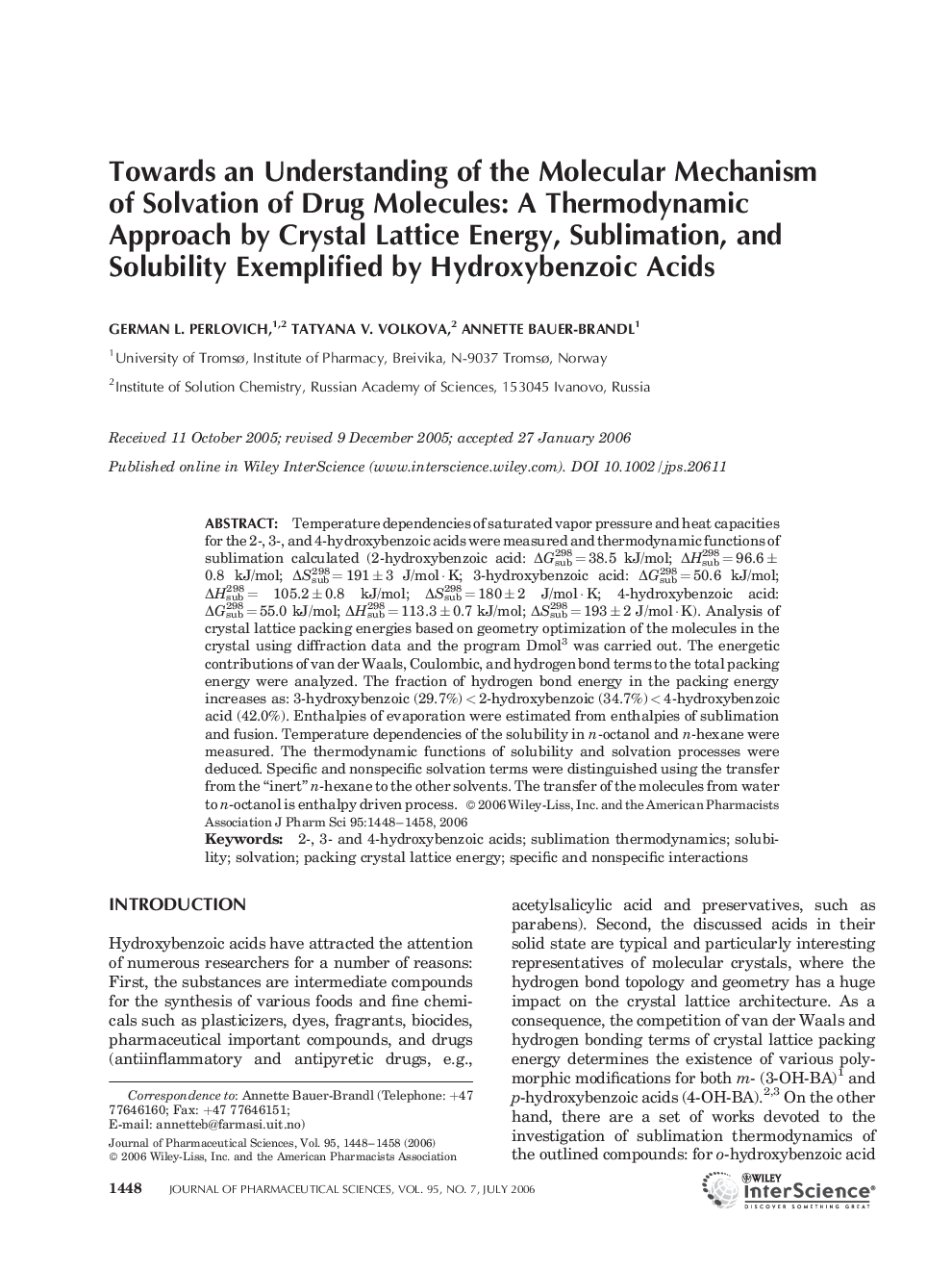| Article ID | Journal | Published Year | Pages | File Type |
|---|---|---|---|---|
| 2487931 | Journal of Pharmaceutical Sciences | 2006 | 11 Pages |
Abstract
Temperature dependencies of saturated vapor pressure and heat capacities for the 2-, 3-, and 4-hydroxybenzoic acids were measured and thermodynamic functions of sublimation calculated (2-hydroxybenzoic acid: ÎGsub298 = 38.5 kJ/mol; ÎHsub298 = 96.6 ± 0.8 kJ/mol; ÎSsub298 = 191 ± 3 J/mol · K; 3-hydroxybenzoic acid: ÎGsub298 = 50.6 kJ/mol; ÎHsub298 = 105.2 ± 0.8 kJ/mol; ÎSsub298 = 180 ± 2 J/mol · K; 4-hydroxybenzoic acid: ÎGsub298 = 55.0 kJ/mol; ÎHsub298 = 113.3 ± 0.7 kJ/mol; ÎSsub298 = 193 ± 2 J/mol · K). Analysis of crystal lattice packing energies based on geometry optimization of the molecules in the crystal using diffraction data and the program Dmol3 was carried out. The energetic contributions of van der Waals, Coulombic, and hydrogen bond terms to the total packing energy were analyzed. The fraction of hydrogen bond energy in the packing energy increases as: 3-hydroxybenzoic (29.7%) < 2-hydroxybenzoic (34.7%) < 4-hydroxybenzoic acid (42.0%). Enthalpies of evaporation were estimated from enthalpies of sublimation and fusion. Temperature dependencies of the solubility in n-octanol and n-hexane were measured. The thermodynamic functions of solubility and solvation processes were deduced. Specific and nonspecific solvation terms were distinguished using the transfer from the “inert” n-hexane to the other solvents. The transfer of the molecules from water to n-octanol is enthalpy driven process. © 2006 Wiley-Liss, Inc. and the American Pharmacists Association.
Related Topics
Health Sciences
Pharmacology, Toxicology and Pharmaceutical Science
Drug Discovery
Authors
German L. Perlovich, Tatyana V. Volkova, Annette Bauer-Brandl,
